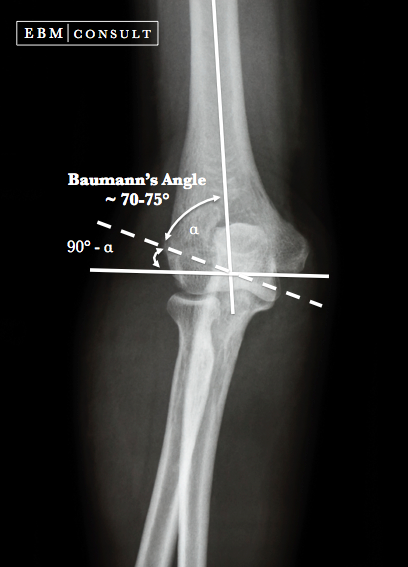Baumann's Angle
Summary:
- Baumann's angle is used for assessing supracondylar fractures (distal fracture of the humerus).
- The angle is determined by drawing a line
straight down through the middle of the humeral shaft and then through the trochlea and then drawing a
line that is perpendicular to the humeral shaft line. Then a line is made
parallel, but running through the lateral condylar physis.
- The angle between the humeral shaft line and the
parallel line to the lateral condylar physis should be about 70 - 75 degrees.
Baumann's Angle
|
|---|


